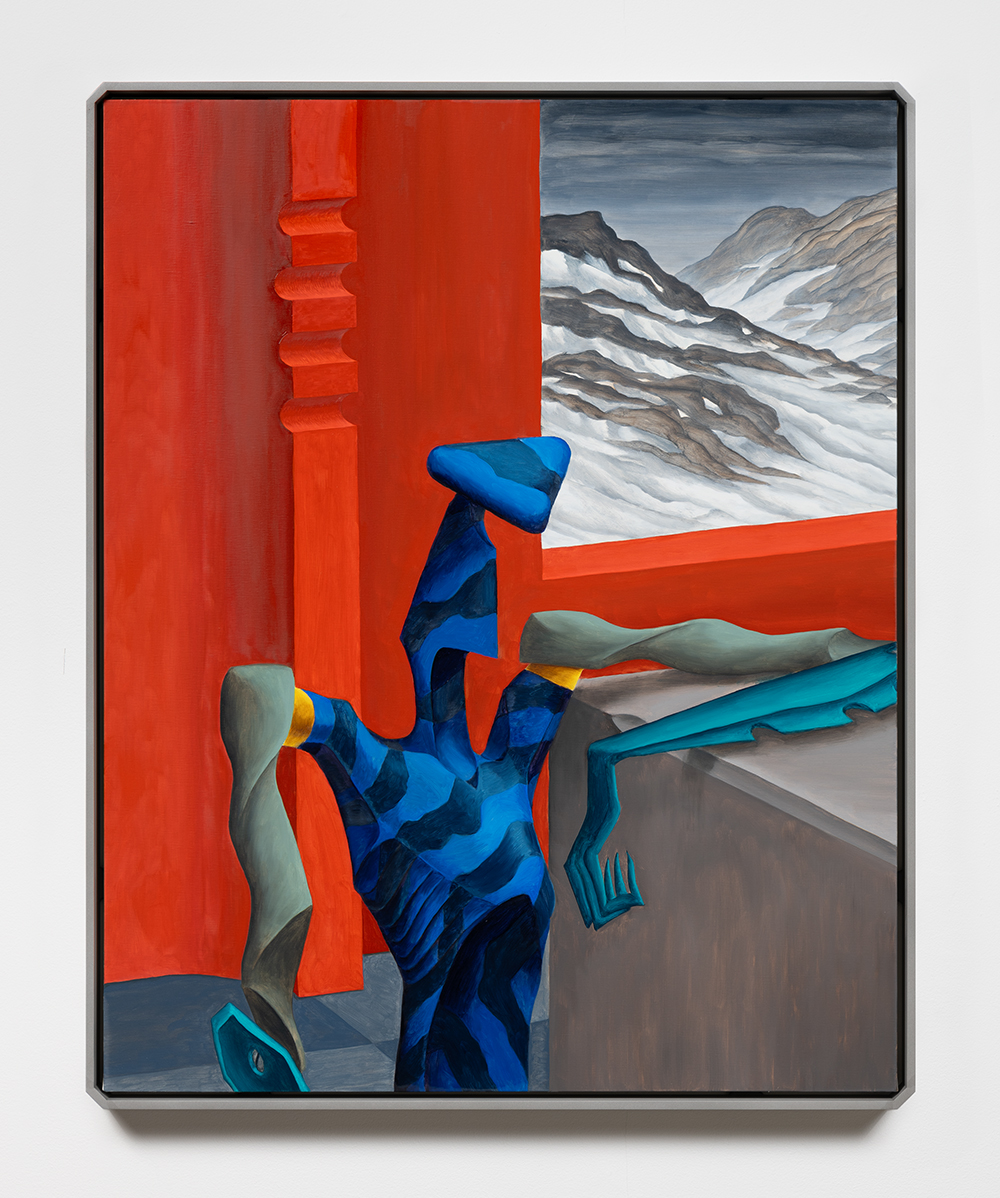So much more than paintings in bespoke carrying cases—though they certainly are that—the results of Alejandro Cardenas’ collaboration with Case Studyo, a Belgian artist-edition platform, engage the conceptual premise of the project with a thoughtful intentionality that almost completely transcends gimmick. Case Studyo has its own dedicated fanbase, many of whom visited the exhibition due to their interest in the Porta-MANTIS™ objects, rather than their contents.
The lustrous anodized metal carrier boxes are indeed gorgeous, with smooth skins of metallic amber, formed in three parts—two plates that snap, front and back, onto a structural perimeter with an integrated handle. Their construction is sleek and clean, both minimal and with occasional dramatic flourishes such as the toothsome crinoline texture on the boxes’ handle grips. When the cases aren’t in use for transport, one can hang them on the wall using the handles as brackets. Voilà—instant frame, easy installation.
The paintings (not all of which come in cases, as there are some works larger than the uniform edition measurements) are almost the opposite of these sleek cases. Faceless, mechanical yet eerily anthropomorphic figures, alone or in pairs, inhabit postcard-ready settings for recreation, romance, daydreaming, and adventure: PM03 Newer Shore’s beach, PM04 The Burning’s epic sunset, Dusk’s urban picnic vista, the Wyeth-like night meadows of PM08 Moon Field, and so on (all works 2023). Several paintings—such as the striking and pensively regal portrait of a pattern-skinned figure at a window, The Anodized Hall 2—include architectural details that echo the corrugated texture of the case’s handle and its austere steel hue, forming a bridge between the frame and the canvas that is both pictorial and conceptual. Other than that, the paintings are about as different in sensibility from the cases as they can be.

Alejandro Cardenas, The Anodized Hall 2, 2023. Courtesy of Anat Ebgi.
More than hard and soft, more than natural and technological, more than nostalgic and optimistic, the hybrid soul of these works is post-human; the figures in the scenes are not, strictly speaking, human beings. Like the cases/paintings themselves, they are both and not entirely either. They are a future or parallel species along the cyborg/robotic/possibly alien continuum. The figures are rendered via a softly textured, thick and creamy near-naturalism, and the pastoral views and casual surrealism of these compositions recall those of Giorgio de Chirico, the machine-obsessed Futurists, and other early 20th-century art-historical experiments with symbolism, modernity and the psyche.
These cases would almost certainly be less appealing if they framed more predictable or Pop-inflected images; they would not benefit from a pairing that was too on the nose. Neither is it clear that the guileless, poetically depicted scenes of sleek and sexy blade-handed figures on vacation, overcome with emotion, or lost in thought, would still shine as brightly without the counterpoint of the framing devices. The most compelling element of the series is the juxtapositional flicker between the disparate aesthetics as they each inform the other—taking not only the eye on a trip, but the mind as well.



















0 Comments